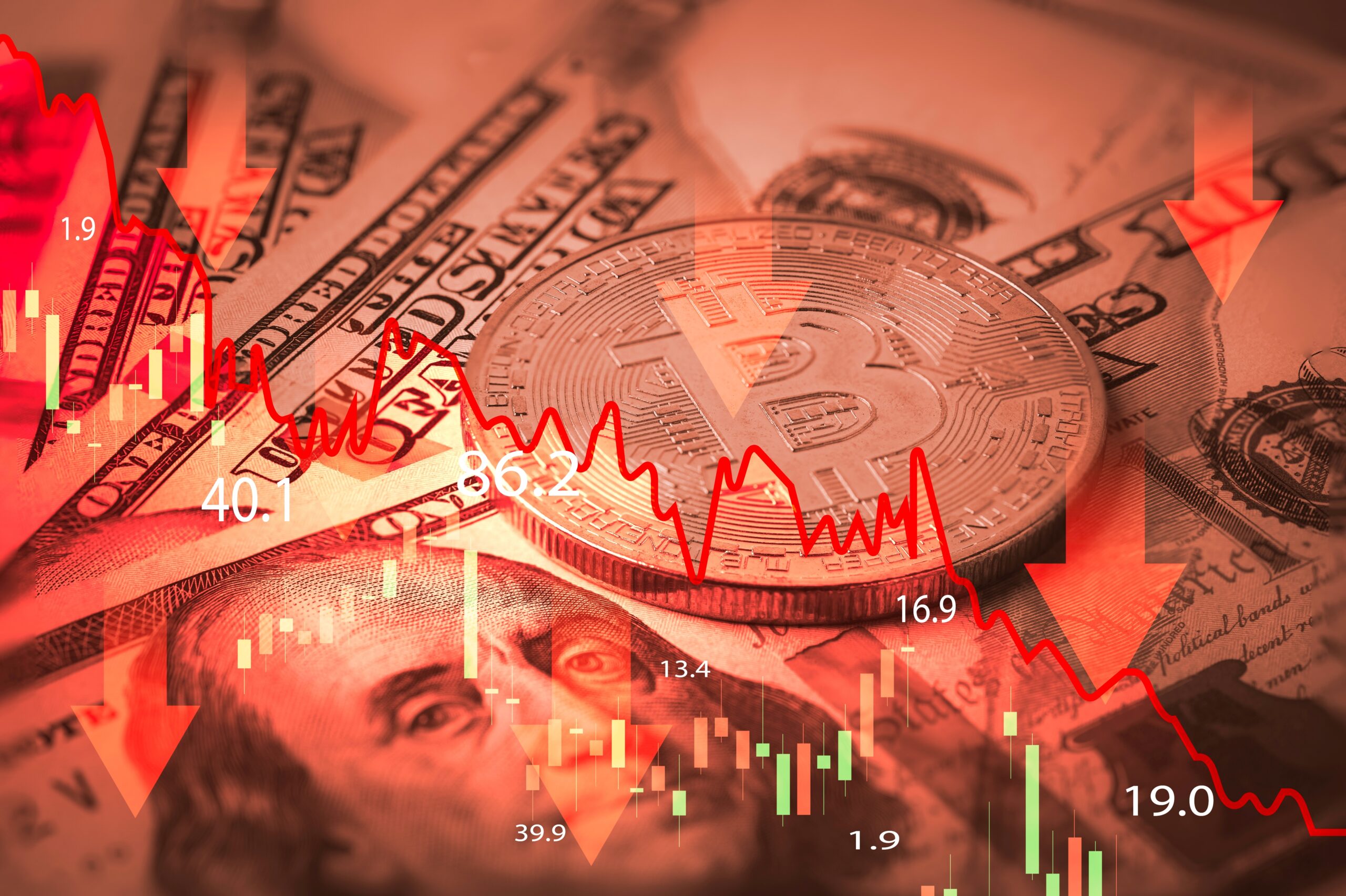No, at least not for the long term.
The market has done what was widely considered improbable six weeks ago.
From crypto degens to institutional investors such as Matthew Sigel (VanEck), Geoffrey Kendrick (Standard Chartered), Tom Lee and Michael Saylor (no surprises here), many have expected BTC to reach $150K to $200K by the end of 2025.
Most have been banking on an explosive Q4, in line with previous bull cycles.
We got two consecutive 25-bps rate cuts and talks between Trump and Xi to help ease concerns about tariffs, but crypto has imploded rather than gone to the moon.
So, what’s been happening? Why has the market dropped?
It can be summed up in four points:
- Many tech/AI stocks were (and still are) considered overheated. Tech-heavy indices, such as the NYSE Arca Tech 100 Index (^PSE) and the NASDAQ-100 Technology Sector (^NDXT), are down by 12–15% over the past four weeks. As the Magnificent 7 stocks make up ~34% of the S&P 500, it has also taken a hit, albeit to a lesser extent.
One look at the relative strength index (RSI) for a given stock is a starting point for gauging whether it is overbought or oversold. - It’s becoming unlikely that the Fed will deliver another rate cut next month.
- Multiple long and short positions have been liquidated in recent weeks as Bitcoin fell below key support levels, including $100K and $ 90K.
- The sombre mood across the market has also led to whales taking profits and net outflows among the Bitcoin ETF providers since the $126K all-time high. There have been nearly $2 billion in net outflows over the past week, but it has been balancing out once again.
The other factor that has still severely affected retail investors was Trump’s abrupt October 9 announcement of 100% tariffs on China.
Seeing how much altcoins got hammered in the hours following that post, many will have PTSD for months or even years to come following that carnage.
Even after this market-wide fall, Robert Kiyosaki indicated that BTC could still hit $200K by year’s end.
Two weeks ago, Alex Thorn, Head of Firmwide Research at Galaxy Digital, offered a revised EOY target of $120,000 following last month’s crash.
Additional thoughts
It’s the same old flush-out of weak hands, with some institutional investors taking profits along the way, for whatever reason.
As a reminder, we are still above Bitcoin’s all-time high of $69,400.
Should we be worried? I am not.
We’re all in different positions in life, so I can’t speak for everyone. But you need to be comfortable with your decision and ensure that you have enough cash flow to cover your essentials.
Be at peace with your decision and move on.
“If you’re a long-term investor, stop worrying about what the short-term speculators are saying. And if you’re a short-term speculator, stop worrying what the long-term investors are saying.”
Anthony Pompliano > ‘Bitcoin Crashes to $89K — What Happens Next?’, November 19, 2025.
Many detractors will say, “This time, it’s different.” It’s time to sell Bitcoin and go back to the tried-and-tested store-of-value: gold.
While I believe gold will continue to do well, I still prefer Bitcoin, Ethereum, and other blue chips.
If you assume that it’s because Bitcoin mining is no longer profitable, think again.

Cambridge Bitcoin Electricity Consumption Index
(CBECI). Available under
. Snapshot taken on November 21, 2025, at 00:20 UTC.
If Bitcoin miners started running at a loss and had to shut down operations, this would (briefly) lower the hashrate, lowering costs and incentivising existing miners to ramp up or come back online.
Hardware setup, along with ongoing operational costs for electricity to run ASIC miners and HVAC systems, and maintenance costs, are among the largest expenses of Bitcoin mining.
Considering 52.4% of electricity assigned to Bitcoin mining is derived from “sustainable” sources such as nuclear and renewables, coupled with economies of scale, I imagine the costs to mine 1 BTC are more in line with the middle tier, around $60K, rather than the upper theoretical bound of $100K.
This has also occurred during periods of abrupt restrictions on Bitcoin mining in China, such as in 2021. This was also triggered in Texas in December 2022 during winter storms, and again in January 2024, when its grid regulator requested that Bitcoin miners curtail activity amid an unprecedented cold snap.
Besides, Iren, CleanSpark, and other established Bitcoin miners have been gradually diversifying their business strategies, pivoting to AI data centres, while also securing land and power sources to sustain their operations.
In January, in a Bloomberg Live discussion, BlackRock CEO Larry Fink said:
“If you’re frightened of the debasement of your currency, or the economic or political stability of your country, you could have an internationally based instrument called Bitcoin that will overcome those local fears.”
Ask yourself this: What has fundamentally changed with crypto that’s completely killing faith in this asset class?
If there’s nothing concerning about crypto’s long-term prospects, then keep calm and HODL on.
Affiliate links
Use the following links to help support my channel. I receive a small commission per sale or new client at no additional cost. Take advantage of Black Friday sales while they last.
Kraken
Get A$50 to your Kraken account. Unlock it after your first trade of $130 (~A$200) with code: yt7dpbgr or through this link: https://invite.kraken.com/JDNW/g5xvarar
You might also be interested in these stories:
Disclaimers
• N.B. None of this is financial advice; I am not a financial advisor. This content is for educational purposes only. You are ultimately responsible for your investments.
• My opinions may not reflect those of any news outlet, person, organisation, or other entity listed here.
•Please conduct thorough research before investing in any cryptocurrency assets, staking, NFTS, or other products associated with this space.
Featured image by Dilok Klaisataporn at Shutterstock.



